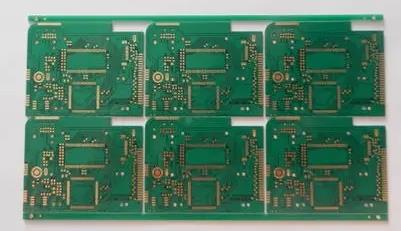In recent years, the continuous introduction of wireless communication, optical fiber communication and high-speed data network products, high-speed information processing and wireless analog front-end modularization have put forward new requirements for digital signal processing technology, IC process and Microwave PCB design, as well as higher requirements for PCB plate and PCB process.
For example, commercial wireless communication requires the use of low-cost plates and stable dielectric constant( ε R variation error is between ± 1-2%), low dielectric loss (below 0.005). Specific to the PCB board of mobile phone, it also needs to have the characteristics of multi-layer lamination, simple PCB processing technology, high reliability of finished board, small volume, high integration and low cost. In order to challenge the increasingly fierce market competition, electronic engineers must make a compromise between material performance, cost, difficulty of processing technology and reliability of finished boards.
At present, there are many plates available for selection, and the representative commonly used plates are: epoxy resin glass cloth laminate FR4, polyester fluoroethylene PTFE, polytetrafluoroethylene glass cloth F4, modified epoxy resin FR4, etc. Special plates, such as sapphire substrate and ceramic substrate used in satellite microwave transceiver circuit; Microwave circuit substrate GX series, ro3000 series, ro4000 series, TL series, TP-1 / 2 series, f4b-1 / 2 series. They are used on different occasions, such as FR4 for mixed signal circuits below 1GHz, polyvinylidene fluoride PTFE for multi-layer high-frequency circuit boards, Teflon glass cloth fiber F4 for double-sided microwave circuit boards, and modified epoxy resin FR4 for high-frequency heads of household appliances (below 500MHz). FR4 plate is widely used because of its easy processing, low cost and easy lamination.

Next, we analyze the characteristics of microstrip transmission line, multilayer plate lamination process, plate parameter performance comparison and other aspects, give the selection scheme of PCB plate for special applications, and summarize the key points of high-frequency signal PCB design for the reference of electronic engineers.
Transmission characteristics of microstrip transmission line
The performance index of the plate includes dielectric constant ε r. Loss factor (dielectric loss tangent) TG δ, Surface finish, surface conductor conductivity, peel strength, thermal expansion coefficient, bending strength, etc. Dielectric constant ε r. Loss factor is the main parameter.
High speed data signal or high-frequency signal transmission is commonly used in microstrip line, which is composed of conduction band and conductor grounding plate attached to both sides of dielectric substrate, and part of the conduction band is exposed to air. Signal propagation in dielectric substrate and air causes unequal transmission phase velocity, which will produce radiation component. If the microstrip size is reasonably selected, this component is very small.